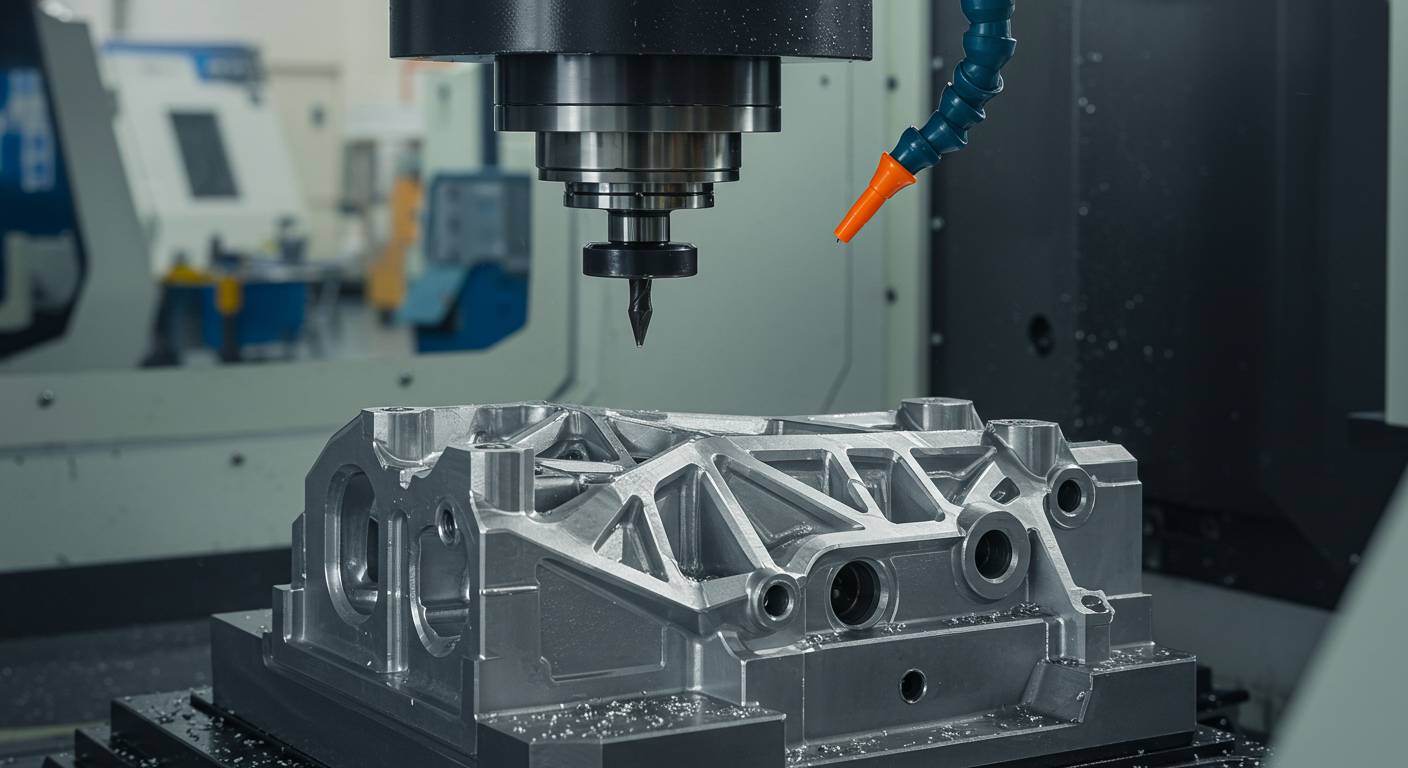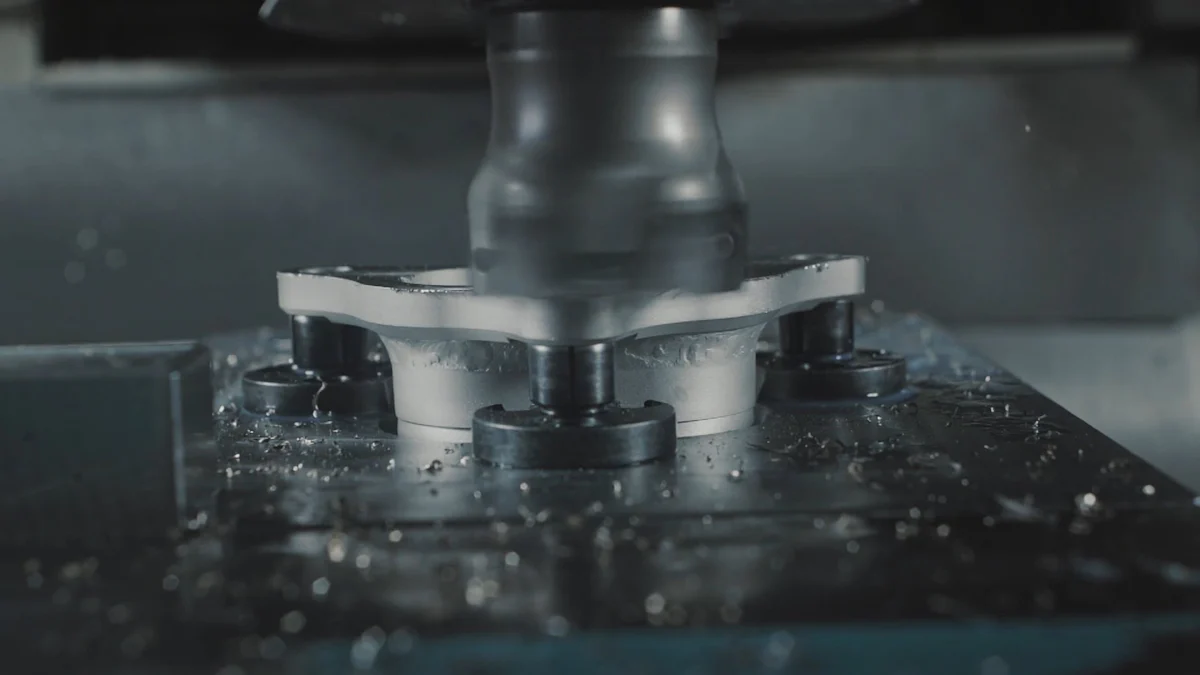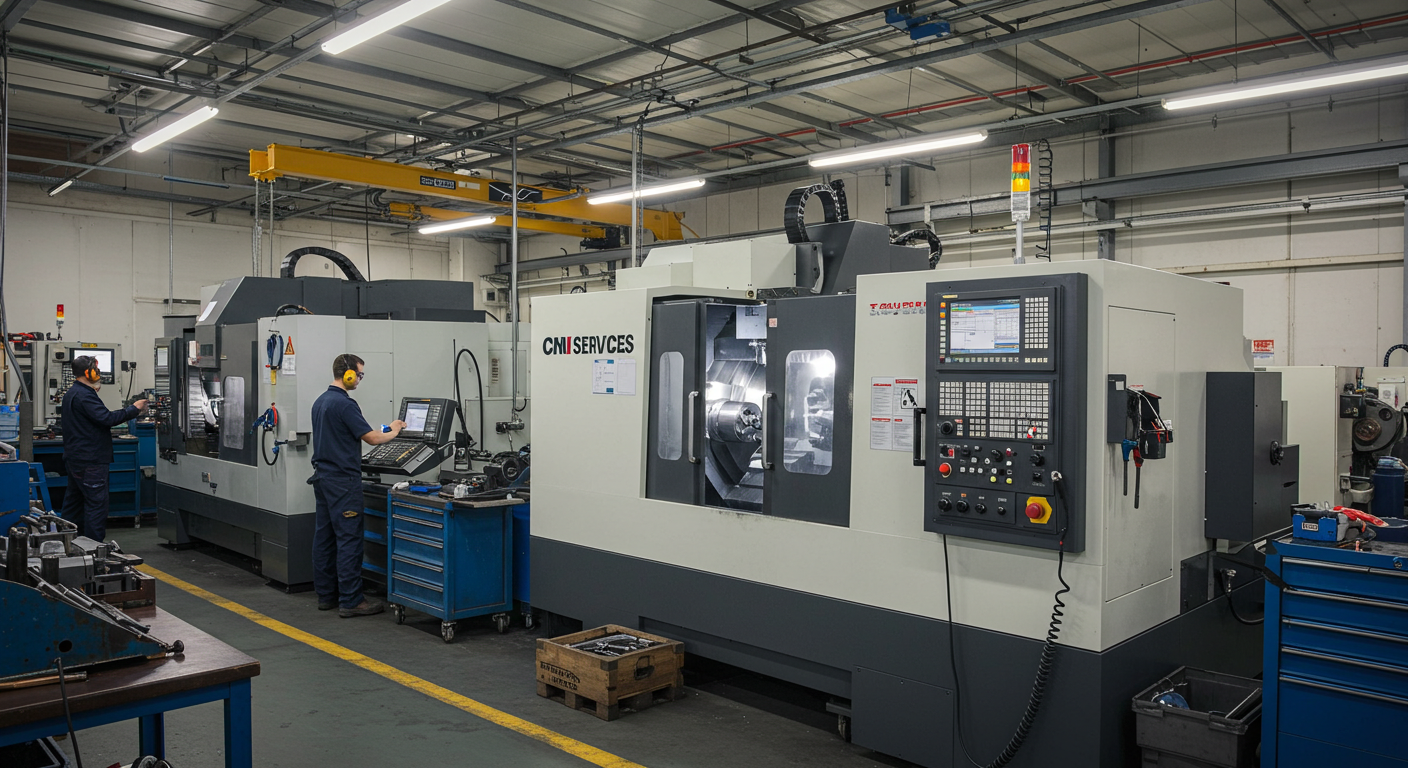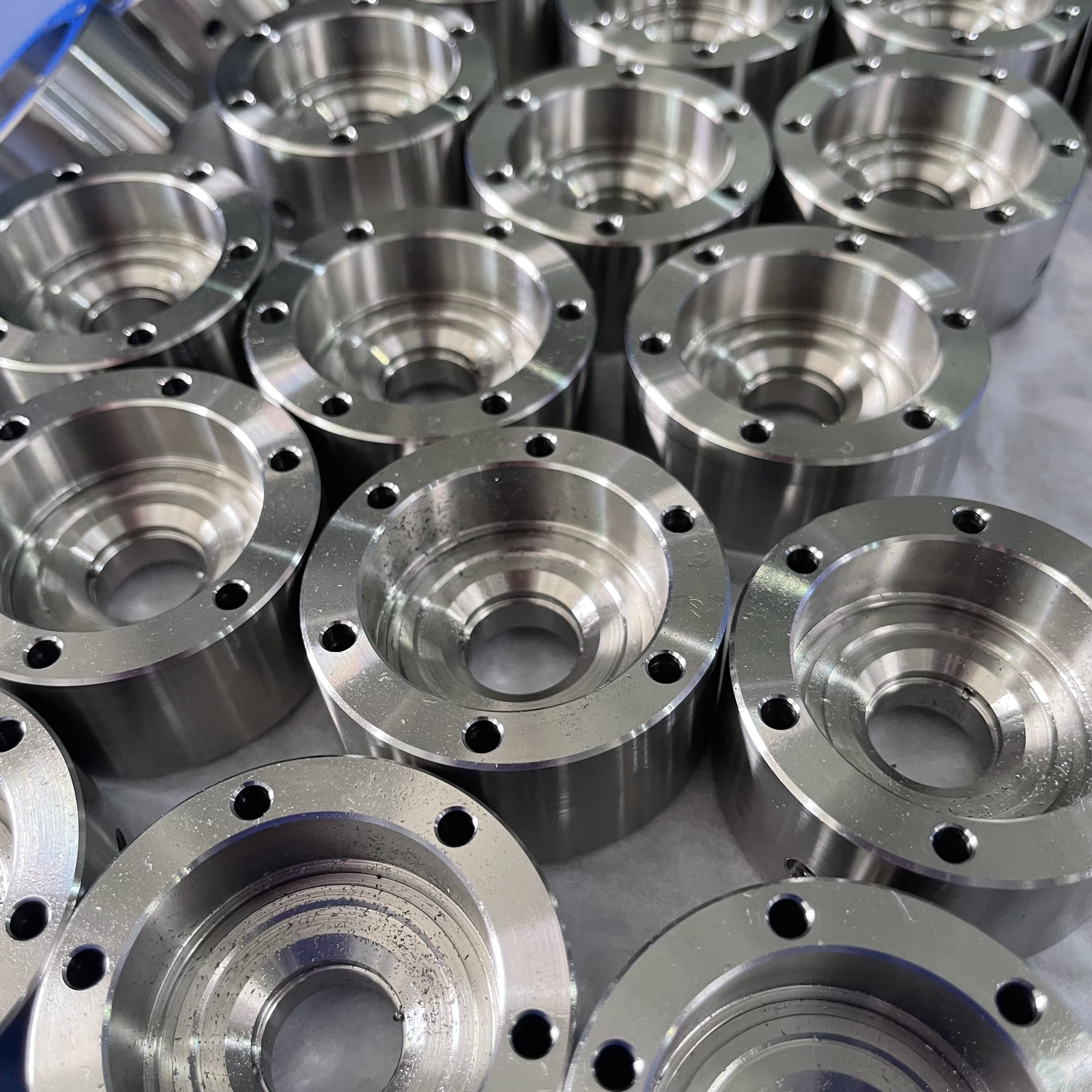The Importance of CNC Machining in Modern Manufacturing Industries

CNC machining plays a pivotal role in modern manufacturing industries by delivering precision and efficiency that traditional methods cannot match. You benefit from its ability to automate complex tasks, reducing human error and ensuring consistent quality. The global CNC machine market, projected to reach $128.86 billion by 2026, reflects its growing adoption across sectors like automotive, defense, and medical. Unlike traditional machining, CNC systems utilize advanced software to achieve unparalleled accuracy, faster production speeds, and minimal material waste. This makes CNC machining indispensable for meeting the demands of modern manufacturing.
Key Takeaways
CNC machines do hard tasks automatically, lowering mistakes and keeping quality steady.
This tech is very precise, making it important for planes and medical tools.
CNC machines work nonstop, helping make more things faster with less waste.
They can use many materials, so they are useful in many industries.
Using CNC machines saves money and helps the planet by using fewer resources and cutting waste.
Understanding CNC Machining

Definition and Core Principles
CNC machining, or computer numerical control machining, is a manufacturing process that uses computerized systems to control machinery and tools. This technology enables you to produce parts with exceptional precision and consistency. Unlike traditional methods, CNC machining translates computer-aided design (CAD) models into physical components with minimal variation.
The core principles of CNC machining include:
Utilizing computer numerical control for precision manufacturing.
Converting digital designs into tangible parts.
Employing advanced cutting tools to remove material efficiently.
These principles ensure that CNC machining remains a cornerstone of modern manufacturing, offering unmatched accuracy and scalability.
How CNC Machining Operates
CNC machines operate through a series of interconnected components and processes. Each part plays a critical role in ensuring the machine functions seamlessly. Here’s how it works:
Machine Control Unit (MCU): This serves as the brain of the CNC machine, interpreting G-code instructions to guide operations.
Drive System: Motors and gears power the machine’s movements, ensuring precise positioning.
Machine Tool: This component shapes and removes material from the workpiece.
Feedback System: It monitors the machine’s position and movement to maintain accuracy.
Bed and Table: These provide a stable base and workspace for the material being processed.
Cooling System: Heat generated during machining is dissipated to maintain optimal conditions.
Input Devices: Operators use these to input G-code programs and control the machine.
By automating these processes, CNC machining eliminates the need for manual intervention, reducing errors and increasing efficiency.
Types of CNC Machines
CNC machines come in various types, each designed for specific applications. Some of the most common types include:
Pick and Place Machine
CNC 3D Printer
CNC Router
CNC Drilling Machine
CNC Lathe Machine
5-Axis CNC Machine
CNC Milling Machine
CNC Plasma Cutting Machine
CNC Laser Cutting Machine
Electric Discharge CNC Machine
CNC Grinding Machine
CNC Machine with Automatic Tool Changes
These machines cater to diverse industries, from aerospace to automotive, enabling you to create complex designs with precision. Their versatility makes them indispensable in modern manufacturing.
Applications in Modern Manufacturing
CNC machining has revolutionized modern manufacturing by enabling you to produce complex components with precision and efficiency. Its applications span a wide range of industries, each benefiting from its unique capabilities.
1. Automotive Industry
In the automotive sector, CNC machining plays a critical role in creating high-performance parts. You can use it to manufacture engine components, transmission systems, and custom car parts. Its precision ensures that every piece meets strict safety and performance standards. CNC machines also allow you to prototype new designs quickly, accelerating innovation in vehicle technology.
2. Aerospace Industry
The aerospace industry demands unparalleled accuracy due to the safety-critical nature of its components. CNC machining helps you produce turbine blades, structural parts, and landing gear with exact specifications. Its ability to work with materials like titanium and aluminum makes it ideal for aerospace applications. You can rely on CNC technology to meet the stringent requirements of this industry.
3. Medical Sector
In healthcare, CNC machining enables you to create surgical instruments, prosthetics, and implants with exceptional precision. For example, CNC machines can produce custom orthopedic implants tailored to a patient’s anatomy. This technology ensures that medical devices meet the highest quality standards, improving patient outcomes.
4. Electronics Manufacturing
CNC machining is essential in the electronics industry for producing small, intricate components. You can use it to manufacture circuit boards, heat sinks, and connectors. Its precision ensures that these parts fit seamlessly into electronic devices, enhancing their performance and reliability.
5. Energy Sector
In the energy industry, CNC machining supports the production of components for wind turbines, solar panels, and oil rigs. You can use it to create durable parts that withstand extreme conditions. This technology helps you improve the efficiency and longevity of energy systems.
Tip: CNC machining’s versatility allows you to adapt it to various industries, making it a valuable tool for modern manufacturing.
By leveraging CNC machining, you can meet the demands of diverse industries while maintaining high standards of quality and efficiency. Its applications continue to expand, driving innovation across the manufacturing landscape.
Key Benefits of CNC Machining in Modern Manufacturing

Precision and Accuracy
CNC machining has revolutionized the manufacturing process by delivering unmatched precision and accuracy. Modern CNC machines achieve tolerances measured in microns, a feat made possible by advancements in computing power, software algorithms, and sensor technology. This level of precision ensures that every component you produce meets exact specifications, reducing the need for rework and enhancing product quality. Early CNC machines already surpassed manual methods in accuracy, but today’s systems have set a new standard in modern manufacturing. Whether you’re crafting intricate aerospace parts or medical implants, CNC machining guarantees consistent results with minimal variation.
Enhanced Efficiency and Productivity
CNC machining optimizes your production process by automating tasks that would otherwise require significant manual effort. This automation allows you to achieve faster production speeds and consistent quality. Here’s how CNC technology enhances efficiency and productivity:
It operates autonomously, freeing up labor for strategic tasks.
CNC machines can run 24/7, increasing output without additional labor costs.
Continuous operation accelerates production timelines and throughput.
Optimized cutting paths reduce material waste, improving resource utilization.
Reduced setup times and seamless scalability streamline both prototyping and large-scale production.
By leveraging CNC machining, you can meet tight deadlines and scale operations without compromising on quality. This efficiency makes it an indispensable tool in modern manufacturing.
Improved Safety and Reduced Human Error
CNC machining prioritizes operator safety by keeping you at a safe distance from moving parts. Machines operate behind protective guards or within enclosed safety doors, minimizing the risk of injuries like cuts or exposure to harmful materials. Additionally, CNC systems reduce human error by automating complex tasks. Built-in safety features and high manufacturing standards further protect operators, ensuring a safer work environment. Compared to manual methods, CNC machining significantly lowers workplace accidents, allowing you to focus on productivity without compromising safety.
Versatility in Material and Design
CNC machining offers you unmatched versatility when working with different materials and designs. This flexibility allows you to meet the demands of diverse industries, from aerospace to consumer electronics. Whether you need to machine metals, plastics, or composites, CNC technology adapts to your requirements with ease.
You can work with a wide range of materials, including:
Metals: Aluminum, steel, titanium, brass, and copper.
Plastics: ABS, polycarbonate, nylon, and acrylic.
Composites: Carbon fiber and fiberglass.
Specialty Materials: Ceramics and wood.
This adaptability ensures that you can create components for various applications, regardless of the material's properties. CNC machines also support intricate designs, enabling you to produce complex geometries that would be impossible with traditional methods. For example, you can craft lightweight aerospace parts with internal cavities or medical implants with custom contours.
Note: CNC machining's ability to handle diverse materials and designs makes it a go-to solution for prototyping and mass production alike.
The precision of CNC machining ensures that your designs are faithfully reproduced, no matter how intricate they are. Advanced software and multi-axis capabilities allow you to achieve exceptional detail and accuracy. This versatility empowers you to innovate and push the boundaries of what’s possible in manufacturing.
Cost-Effectiveness and Waste Reduction
CNC machining helps you save costs while minimizing waste, making it an economical choice for modern manufacturing. By automating production, CNC machines reduce labor expenses and eliminate the need for extensive manual intervention. You can achieve consistent quality without incurring additional costs for rework or corrections.
Material waste is another area where CNC machining excels. Advanced programming optimizes cutting paths, ensuring that you use raw materials efficiently. This reduces scrap and lowers your overall material costs. For instance, CNC milling machines can carve out components with minimal excess, leaving you with more usable material.
Tip: Efficient material usage not only saves money but also supports sustainability goals by reducing environmental impact.
CNC machines also streamline production by minimizing setup times and enabling faster transitions between projects. You can switch from prototyping to full-scale production without significant downtime. This scalability ensures that you meet tight deadlines without compromising on quality or budget.
By leveraging CNC machining, you can achieve cost savings, reduce waste, and maintain high standards of efficiency. This makes it an indispensable tool for competitive industries looking to optimize their operations.
The Role of CNC Machining in Modern Manufacturing Industries
Historical Evolution and Technological Advancements
The evolution of CNC machining began in the 1940s, marking a transformative shift from manual production to automated processes. This innovation enhanced precision and efficiency, laying the foundation for modern manufacturing industries. Over time, technological advancements have further refined CNC systems, making them indispensable in the manufacturing sector.
Key milestones include the integration of CAD/CAM software, which allows you to transition seamlessly from design to production. This capability enables the creation of complex geometries with minimal effort. Multi-axis machining centers have also revolutionized the field by reducing setup requirements and improving accuracy. Additionally, the incorporation of automation and robotics has minimized downtime, ensuring consistent production results. These advancements have made CNC machining a cornerstone of modern manufacturing.
Global Adoption and Market Trends
The global adoption of CNC technologies continues to grow, driven by innovations and market demands. Several trends are shaping this growth:
Artificial Intelligence (AI) is transforming CNC machining by optimizing designs and enabling predictive maintenance.
Smart factory technologies, including IoT and data analytics, are enhancing operational efficiency and competitiveness.
Sustainability initiatives are encouraging the use of eco-friendly materials and energy-efficient practices.
Reshoring strategies are increasing domestic manufacturing in regions like the U.S., improving supply chain control.
The CNC machine market is projected to reach nearly $129 billion by 2026, reflecting its expanding role in modern manufacturing industries. Key players in Asia are also driving technological advancements, further boosting global adoption.
Industry-Specific Applications
CNC machining serves diverse industries, each with unique requirements. In aerospace engineering, you can produce turbine blades and aircraft components with unmatched precision. The automotive industry benefits from CNC systems for manufacturing engine blocks and transmission parts. In alternative energy, CNC machining supports the creation of wind turbine components and solar panel parts. Electronics manufacturing relies on CNC for fabricating connectors and heat sinks, while the construction sector uses it for custom metal brackets and HVAC fittings.
Other applications include:
Semiconductors: High-precision molds and PCBs.
Robotics: Components like robotic arms and sensors.
Dental Equipment: Custom prostheses and orthodontic tools.
Jewelry: Intricate molds and engravings.
This versatility ensures that CNC machining remains a vital tool across the manufacturing sector, enabling innovation and efficiency.
Contribution to Sustainability and Environmental Goals
CNC machining plays a significant role in advancing sustainability and helping you meet environmental goals. By optimizing material usage and reducing waste, CNC technology supports eco-friendly manufacturing practices that align with global sustainability initiatives.
1. Minimizing Material Waste
CNC machines use advanced programming to calculate precise cutting paths. This ensures that you maximize raw material utilization and minimize scrap. For example, CNC milling can carve intricate parts with minimal leftover material. By reducing waste, you not only save costs but also lower your environmental footprint.
Tip: Efficient material usage helps you achieve both economic and environmental benefits, making your operations more sustainable.
2. Energy Efficiency
Modern CNC machines are designed to consume less energy while maintaining high performance. Many systems now include energy-saving features, such as automatic power-off modes during idle times. By adopting energy-efficient CNC technology, you can reduce your energy consumption and contribute to global efforts to combat climate change.
3. Supporting Sustainable Materials
CNC machining allows you to work with eco-friendly materials like recycled metals, biodegradable plastics, and composites. This flexibility enables you to create products that meet sustainability standards without compromising quality. For instance, you can manufacture components for renewable energy systems, such as wind turbines or solar panels, using sustainable materials.
4. Extending Product Lifecycles
CNC machining enhances the durability and precision of manufactured parts. By producing high-quality components, you can extend the lifecycle of your products, reducing the need for frequent replacements. This approach minimizes resource consumption and supports a circular economy.
Note: Longer-lasting products reduce waste and promote responsible consumption, aligning your business with environmental goals.
By leveraging CNC machining, you can integrate sustainability into your manufacturing processes. This technology not only helps you meet environmental regulations but also positions your business as a leader in sustainable innovation. 🌱
Future of CNC Machining in Modern Manufacturing
Innovations in CNC Technology
Recent advancements in CNC technology are transforming manufacturing processes, making them more efficient and precise. Multi-axis machining has emerged as a game-changer, allowing you to create complex geometries with fewer setups. This innovation enhances flexibility and reduces production time. Additionally, the integration of artificial intelligence (AI) and machine learning optimizes tool paths and minimizes downtime, ensuring smoother operations.
Industry 4.0 technologies, including IoT and advanced analytics, are revolutionizing production environments by enhancing productivity, accuracy, and machine reliability through data-driven insights and predictive maintenance.
Key innovations include:
AI and machine learning for predictive maintenance and tool wear analysis.
Digital twin technology for simulating and troubleshooting designs before production.
Real-time monitoring systems that improve quality control and provide actionable insights.
These advancements enable you to achieve higher productivity while maintaining exceptional quality standards.
Integration with Robotics and Artificial Intelligence
The integration of robotics and AI into CNC machining is reshaping modern manufacturing. Automation and robotics streamline repetitive tasks, reducing human error and increasing efficiency. For example, robotic arms can handle material loading and unloading, allowing you to focus on more strategic operations.
Automation and robotics are critical in transforming CNC machining processes.
IoT and big data analytics enhance machine efficiency and flexibility.
AI enables predictive maintenance, optimizing production processes and reducing downtime.
Several manufacturers have reported significant improvements in efficiency and reduced error rates due to AI integration. By analyzing data in real-time, AI enhances production capacity and boosts machine productivity. This combination of robotics and AI ensures that CNC automation remains at the forefront of manufacturing innovation.
Trends in Smart Manufacturing and Automation
Smart manufacturing is driving the future of CNC machining by leveraging automation and connectivity. The transition from manual control to unmanned, high-efficiency production is becoming the norm. AI plays a pivotal role in this shift, enabling efficient path planning, real-time quality monitoring, and dynamic parameter adjustments.
Emerging trends include:
AI-generated machining paths that reduce cycle times and improve productivity.
Real-time quality monitoring to ensure stability and consistency in production.
Predictive maintenance to prevent interruptions caused by tool wear.
Dynamic adjustments to machining parameters for enhanced efficiency and quality.
The integration of IoT and big data analytics allows machines to communicate in real-time, optimizing production processes and improving quality control. These advancements position CNC machining as a cornerstone of smart manufacturing, ensuring you stay competitive in an evolving industry.
Challenges and Opportunities for Growth
The future of CNC machining presents both challenges and opportunities for you to explore. Understanding these factors can help you adapt and thrive in an evolving manufacturing landscape.
Challenges in CNC Machining
High Initial Investment
CNC machines require significant upfront costs. Purchasing advanced equipment and integrating it into your production line can strain budgets, especially for small businesses.Skilled Workforce Shortage
Operating CNC systems demands specialized knowledge. Finding and retaining skilled operators and programmers can be difficult, particularly in regions with limited technical training programs.Rapid Technological Advancements
The pace of innovation in CNC technology can make existing systems obsolete quickly. Keeping up with advancements requires continuous investment in upgrades and training.Cybersecurity Risks
As CNC systems become more connected through IoT, they face increased vulnerability to cyberattacks. Protecting sensitive data and ensuring system security is a growing concern.
Tip: Regularly updating your cybersecurity measures can safeguard your CNC systems from potential threats.
Opportunities for Growth
Adoption of Smart Manufacturing
Integrating CNC machining with smart technologies like IoT and AI can enhance efficiency and productivity. You can leverage real-time data to optimize operations and reduce downtime.Expansion into Emerging Markets
Developing regions are investing in advanced manufacturing technologies. Expanding your operations into these markets can open new revenue streams.Customization and Prototyping
The demand for customized products and rapid prototyping is rising. CNC machining’s precision and versatility position you to meet these needs effectively.Sustainability Initiatives
CNC technology supports eco-friendly practices by reducing waste and enabling the use of sustainable materials. Aligning your operations with environmental goals can attract eco-conscious clients.
Note: Staying informed about industry trends and investing in workforce development can help you overcome challenges and seize growth opportunities.
By addressing these challenges and capitalizing on opportunities, you can ensure that CNC machining remains a vital part of your manufacturing strategy.
CNC machining stands as a cornerstone of modern manufacturing industries, driving advancements in precision, efficiency, and versatility. Each decade has introduced breakthroughs, reshaping production processes and enabling manufacturers to meet evolving demands. The market, projected to reach $100.86 billion by 2025, highlights its growing importance in producing intricate components with operational efficiency.
The continuous evolution of CNC machining promises to transform modern manufacturing. Innovations like artificial intelligence and additive manufacturing will enhance precision and expand applications. Smart factory technologies will further revolutionize workflows, ensuring interconnected and data-driven production systems. These advancements position CNC machining as a vital force in shaping the future of manufacturing, fostering innovation and sustainability.
FAQ
1. What is CNC machining, and why is it important?
CNC machining uses computer-controlled tools to manufacture parts with precision. It’s important because it ensures accuracy, reduces waste, and increases efficiency. You can rely on it for producing complex components across industries like aerospace, automotive, and medical.
2. How does CNC machining differ from traditional machining?
CNC machining automates processes using software, while traditional machining relies on manual operation. With CNC, you achieve higher precision, faster production, and reduced human error. It’s ideal for complex designs and large-scale manufacturing.
3. What materials can you use with CNC machines?
CNC machines work with metals like aluminum, steel, and titanium, as well as plastics, composites, and specialty materials like ceramics. This versatility allows you to create components for various industries, from electronics to aerospace.
4. Is CNC machining cost-effective for small businesses?
Yes, CNC machining reduces labor costs and material waste, making it cost-effective. While the initial investment may seem high, its efficiency and scalability help you save money in the long run, especially for high-precision or bulk production.
5. How does CNC machining contribute to sustainability?
CNC machining minimizes material waste through optimized cutting paths. It also supports energy-efficient operations and allows you to use eco-friendly materials. By extending product lifecycles, it helps you reduce environmental impact and align with sustainability goals. 🌱
See Also
Exploring CNC Technology's Role in Modern Manufacturing Advancements
The Significance of Precision in CNC Machining Processes
CNC Machining Technology Revolutionizing Precision Manufacturing Techniques
Comparing CNC and Traditional Manufacturing Across Various Sectors
About US
Follow Us
Your prototype holds unparalleled significance, and we deeply value its uniqueness. Collaborating with you during the preparation phase for running your prototype or parts is a commitment we gladly embrace. Whether it's a single part or a complex assembly, we are dedicated to selecting the optimal tools and pathways to bring your envisioned product to life.
At Precision Fab CNC Machining, we specialize in producing parts for prototypes, short runs, and high-volume production. Our prototyping machine capabilities extend across metal, plastic, and wood machining, with welding fabrication services available to complement and finalize your prototype if required.
Address
Address: Room320 10F, Building A,Nanshan international building, Dayawan District, Huizhou, Guangdong, 516001 China
Contacts
billy@timaycnc.com

